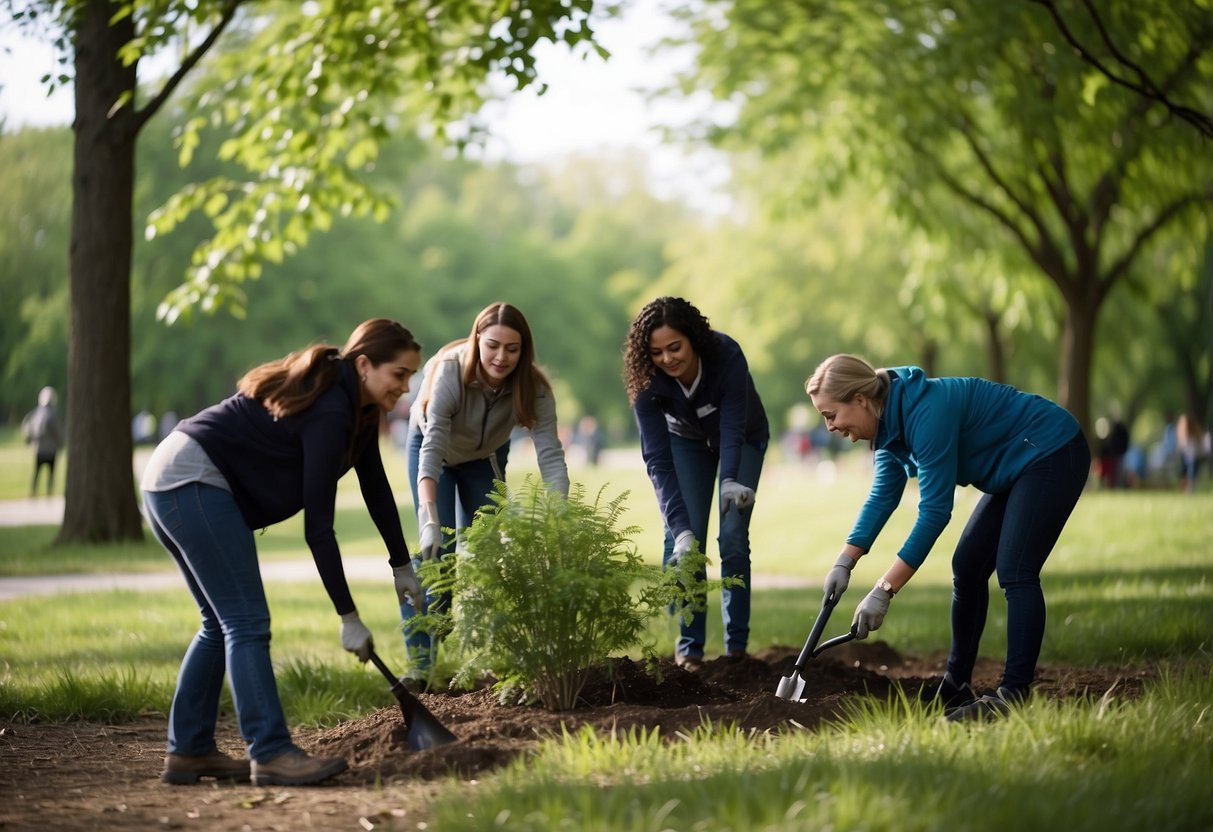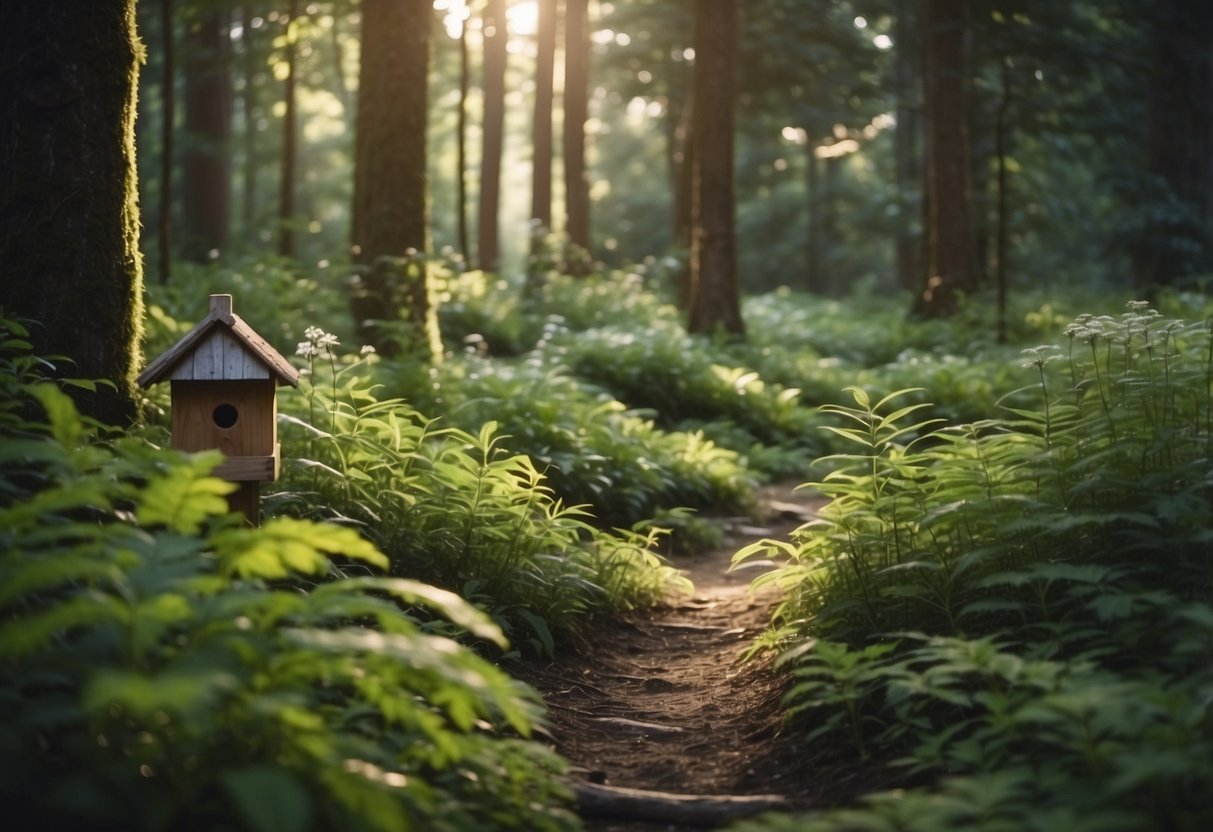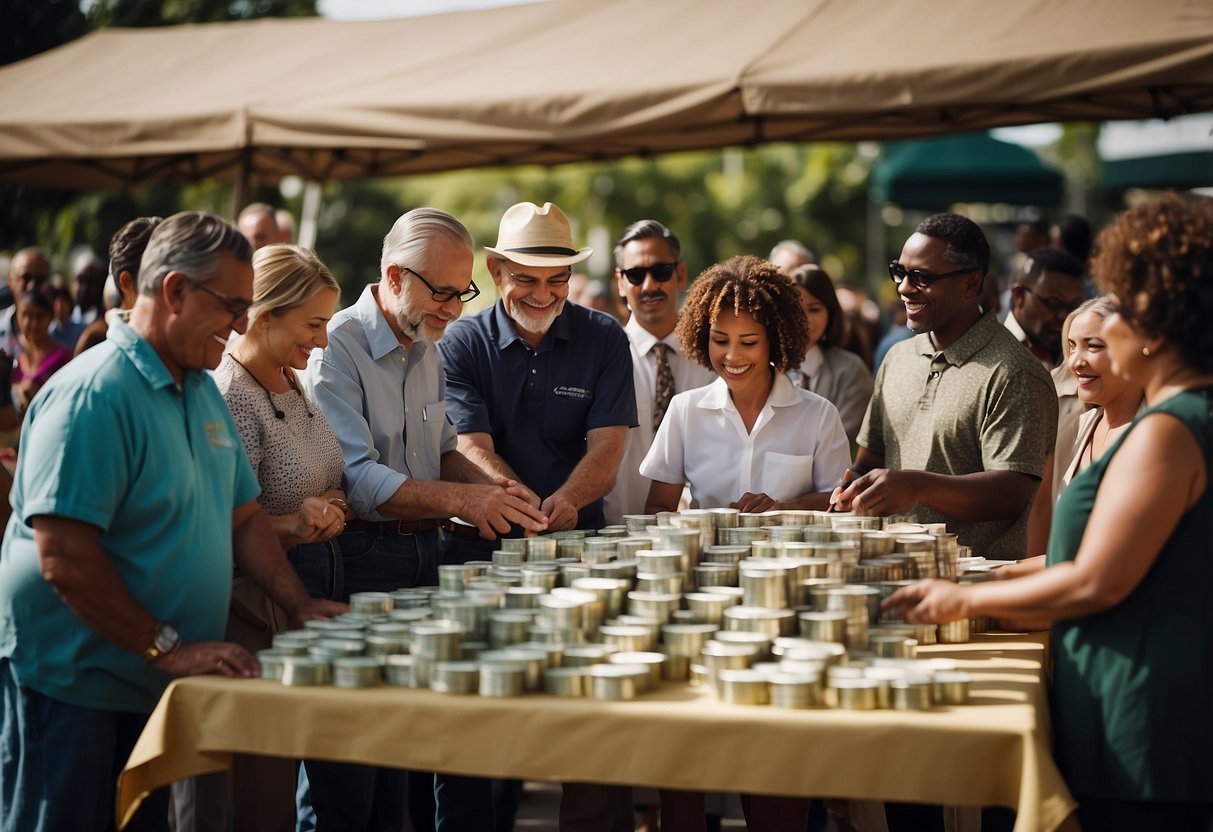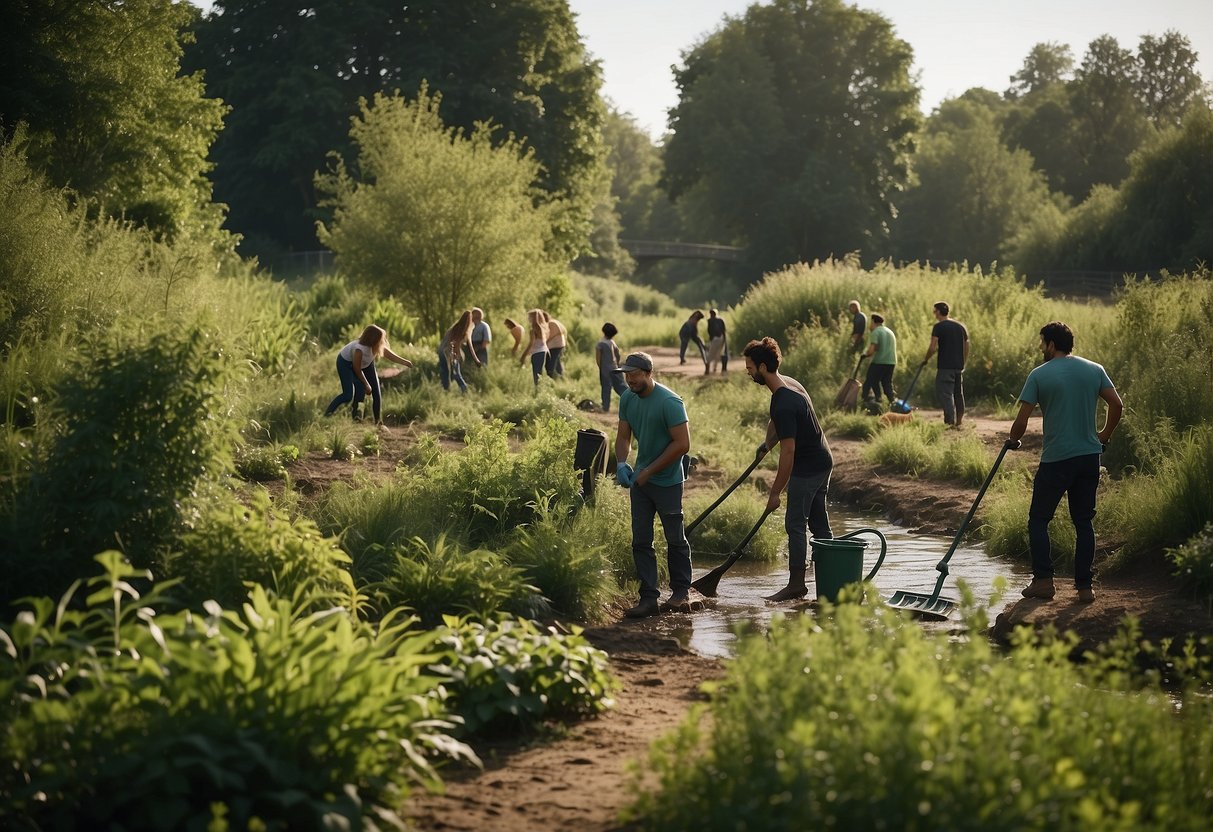How To Get Involved In Local Conservation Efforts: Steps and Tips
Getting involved in local conservation efforts can make a significant impact on preserving our environment.
The best way to start is by identifying conservation opportunities in your community.
Organizations like The Nature Conservancy offer both in-person and virtual volunteering chances to work on various projects. They also provide events and initiatives to help you reduce your carbon footprint and protect nature.
You can find more information about these opportunities here.

Another great way to contribute is by volunteering with the U.S. Fish and Wildlife Service. Volunteers help maintain public lands and support conservation goals.
Your help can ensure that these spaces remain beautiful and accessible to everyone.
Learn more about volunteering with the U.S. Fish and Wildlife Service here.
If you’re unsure where to start, simple actions like joining local clean-up events or advocating for green spaces are great ways to begin.
These efforts may not seem like much, but they add up and create a healthier environment for everyone.
More ideas on how to get involved in conservation can be found here.
Key Takeaways
- Identify local conservation opportunities.
- Volunteer for organizations like The Nature Conservancy.
- Participate in local clean-up events and advocate for green spaces.
Understanding Conservation

Conservation is crucial for protecting our natural environment, and it often involves balancing ecological, social, and economic interests.
Definition and Importance
Conservation refers to the responsible management of natural resources to prevent exploitation, destruction, or neglect. It aims to maintain biodiversity, ecosystem services, and the well-being of local communities.
In my view, conservation is not just about protecting species and habitats. It’s also about sustaining the resources that humans depend on for survival.
Effective conservation efforts can help mitigate climate change impacts, preserve clean water sources, and ensure food security.
Conservation benefits both nature and society. Local communities gain sustainable livelihoods, while ecosystems are preserved for future generations.
Historical Context
Historically, conservation has evolved from a focus on preserving specific species and landscapes to a more inclusive approach.
Early conservation initiatives often excluded local communities, disrupting their lives and sometimes causing conflicts.
During the 20th century, conservationists began to see the importance of involving local people. Indigenous knowledge and practices were recognized as vital for effective conservation.
This shift led to more community-based conservation projects, particularly in regions rich in biodiversity.
Today, conservation strategies integrate scientific research with traditional knowledge.
By learning from the past, we now understand that community involvement is essential for the long-term success of conservation efforts.
Local vs Global Efforts
Local conservation focuses on protecting ecosystems and species within specific regions. These efforts often involve local communities in decision-making and management, leveraging their knowledge and stake in the area’s resources.
Effective local conservation can address immediate threats and improve community well-being.
Global conservation efforts, on the other hand, aim to address issues that cross national borders, such as climate change, deforestation, and biodiversity loss.
These initiatives require international cooperation and large-scale funding.
Organizations like the United Nations and the World Wildlife Fund coordinate global conservation policies and projects.
Both local and global efforts are important. They complement each other by addressing issues at different scales.
Local actions can inform and support global strategies, while global awareness can bring attention and resources to local projects. Understanding their interplay helps us create more comprehensive conservation solutions.
Identifying Local Opportunities
Finding ways to contribute to conservation efforts can be impactful and fulfilling. Below are specific programs and initiatives you can look into to make a difference in your community.
Community Conservation Programs
Many local areas offer programs dedicated to conserving natural and cultural resources.
These programs often involve volunteers in activities like clean-up drives, tree planting, and educational workshops.
You can start by checking with your city or town’s environmental department or local non-profits that focus on conservation.
Neighborhood associations and community centers might also have conservation groups you can join.
Participating in these programs not only helps your environment but also allows you to meet like-minded individuals who care about the same causes.
Look for announcements in local newspapers, websites, and community bulletin boards.
Wildlife Protection Initiatives
Wildlife protection is another key area where you can get involved.
Local wildlife refuges and environmental organizations often seek volunteers for various tasks.
These can include monitoring wildlife populations, protecting endangered species, and working on habitat improvement projects.
Some initiatives might involve educational outreach, where you help raise awareness about local wildlife and conservation issues.
You can find opportunities by contacting local chapters of organizations like the Audubon Society or the U.S. Fish and Wildlife Service.
They can guide you to programs that need your help and provide training if necessary.
Habitat Restoration Projects
Restoring natural habitats is essential for preserving biodiversity.
You can join local efforts to restore wetlands, forests, and prairies, which are critical for maintaining healthy ecosystems.
These projects often require volunteers to plant native species, remove invasive plants, and build structures like birdhouses or beehives.
Local community groups and environmental organizations frequently organize habitat restoration events.
Contacting your local parks department or university extension service can also provide leads on ongoing or upcoming projects.
These efforts not only improve the environment but also enhance the beauty and utility of local spaces for everyone.
Participation Strategies
Engaging in local conservation can be achieved through volunteering, advocacy, and educational outreach. Each approach allows for meaningful contributions to preserving the environment.
Volunteering and Engagement
Volunteering in local conservation projects is a direct way to make a positive impact.
I can join tree planting events, participate in habitat restoration, or help clean up local parks and waterways.
Strengthening ties with local conservation organizations helps me stay informed about upcoming opportunities.
Networking with other volunteers fosters a sense of community and shared purpose.
Volunteer roles can vary, including fieldwork, administrative tasks, or raising awareness.
Matching my skills and interests to the available opportunities ensures a fulfilling experience.
Additionally, volunteering can often lead to discovering new passions and building long-lasting relationships with others dedicated to conservation.
Advocacy and Campaigns
Advocacy involves raising awareness about important conservation issues and encouraging others to take action.
By supporting policies that protect natural habitats and wildlife, I can influence positive environmental change.
Engaging in campaigns, whether through online petitions or public demonstrations, amplifies the reach of conservation messages.
Connecting with local elected officials to express my concerns about environmental issues, writing letters, or attending town hall meetings can also make a difference.
Collaborating with advocacy groups increases the impact of my efforts.
Sharing information through social media, blogs, or community meetings helps educate others and drive collective action.
Educational Outreach
Educational outreach aims to inform and inspire others about conservation.
I can volunteer to lead workshops, give presentations at schools, or create informative content for local media.
These activities help raise awareness and encourage sustainable practices within my community.
Working with local educators to develop conservation-related curriculum or organizing eco-camps for kids fosters environmental stewardship from a young age.
Holding community events like nature walks or documentary screenings provides engaging ways for people to learn about local ecosystems and the importance of preserving them.
Networking with Like-Minded Individuals
By connecting with others who share a passion for conservation, we can exchange ideas, learn new skills, and participate in a variety of activities. This section details the most effective ways to build these valuable connections.
Joining Local Groups and Clubs
Joining local environmental groups or clubs is a great way to meet others who care about conservation.
These groups often organize events like park clean-ups, tree planting, and educational outreach.
Membership provides access to resources, opportunities for volunteering, and a community of supportive individuals who share my values.
I can look for local meetups or join established organizations like wildlife preservation societies.
These groups often have regular meetings, newsletters, and social events.
By being active in these communities, I can stay informed about local conservation efforts and find ways to contribute my skills and time effectively.
Attending Workshops and Seminars
Workshops and seminars offer hands-on learning experiences and a chance to meet experts in the field.
These events often cover topics like sustainable gardening, water conservation, and wildlife protection.
Participation can enhance my knowledge and provide practical skills to apply in my community.
Local environmental organizations, universities, and nature centers frequently host these events.
Attending these sessions allows me to ask questions, engage in discussions, and network with professionals and fellow enthusiasts.
This is also a wonderful way to stay updated on the latest trends and practices in conservation.
Social Media and Online Communities
Social media platforms and online communities are excellent tools for networking with conservation-minded individuals.
Sites like Facebook, Instagram, and Twitter have groups and pages dedicated to environmental causes.
By joining these online spaces, I can connect with people from around the world who share my interests.
These platforms often feature discussions, event announcements, and opportunities for virtual collaboration.
Participating in online forums, attending virtual events, and following influential environmentalists can keep me engaged and informed.
Online communities provide a platform to share experiences, gain insights, and find support for local conservation projects.
Fundraising and Donation Support

Raising funds and making donations are crucial for supporting local conservation efforts. This section covers organizing fundraisers, writing grant applications, and supporting local nonprofits.
Organizing Fundraisers
Organizing fundraisers can be a powerful way to support conservation.
I can start by choosing events that resonate with the community, like charity walks, bake sales, or auctions.
Collaborating with schools or local businesses for these events can help reach a larger audience.
Additionally, using social media to promote fundraisers can attract more participants and donations.
It’s also important to make the fundraiser fun and engaging to encourage more involvement.
Setting clear fundraising goals and sharing them with participants can help keep everyone motivated.
Grant Writing and Applications
Securing grants can provide significant funding for conservation projects.
I should start by researching grant opportunities, focusing on those that support environmental initiatives.
Writing a strong grant proposal involves clearly outlining the project goals, the impact of the project, and the specific funding needs.
It’s important to follow the guidelines provided by the grant-giving organization to ensure that my proposal is considered.
Including data and statistics can help emphasize the importance of the project.
Lastly, proofreading the application before submitting it can help avoid any errors that might lead to rejection.
Supporting Local Nonprofits
Donating to local nonprofits is another effective way to contribute to conservation efforts.
Many local organizations work directly on projects that benefit the environment, like The Nature Conservancy or the Wildlife Conservation Network.
I can support these nonprofits by making monetary donations, which are often tax-deductible.
Additionally, I might volunteer time or resources to help with their initiatives.
Engaging with local nonprofits on social media can spread awareness and encourage others to support their efforts.
Regularly tracking the impact of these organizations helps to ensure that my contributions are making a meaningful difference.
Direct Environmental Action
Getting directly involved in environmental action can make a big impact on local ecosystems.
From picking up litter to planting trees and conserving water, there are several ways to contribute positively.
Litter Clean-Ups
One of the simplest and most effective ways to help the environment is by participating in litter clean-ups.
I join community groups that organize events to pick up trash in parks, beaches, and streets. These events reduce pollution and make public spaces cleaner and safer.
I make sure to bring gloves, bags, and sometimes grabbers to make the task easier.
It’s surprising how much litter can gather in a small area. Removing it not only helps wildlife but also improves the beauty of our local environment.
Tree Planting Campaigns
Tree planting is another direct way to contribute. Trees absorb carbon dioxide, provide oxygen, and offer habitats for wildlife.
I often participate in local tree planting campaigns, which can be organized by schools, communities, or environmental groups.
These campaigns usually provide everything needed, from saplings to tools.
Planting a tree is rewarding because I see the immediate positive impact. Each tree planted helps combat climate change and supports urban biodiversity. Encouraging others to join increases the collective benefit.
Water Conservation Efforts
Conserving water is crucial for sustaining natural resources.
I get involved in efforts to reduce water waste by fixing leaks, using water-saving devices, and promoting drought-resistant landscaping.
Educating my neighbors about these practices is also important.
I participate in local programs that focus on water conservation.
These programs might involve workshops on efficient water use or initiatives like rain barrel installations.
Every drop of water saved helps maintain supplies for both people and wildlife.
Policy and Legislation
Understanding how to engage with local government and stay informed on policy changes is crucial for anyone interested in local conservation efforts.
Engaging with Local Government
One of the most effective ways to support conservation efforts is by engaging with local government officials and attending town hall meetings.
I attend these meetings to voice my opinions on environmental issues. This direct approach ensures my concerns are heard.
Writing letters or emails to local representatives can also make an impact.
I often use clear and concise language to outline the environmental issues that matter to me.
Additionally, joining local conservation groups that focus on policy advocacy can amplify my efforts.
Volunteering for political campaigns of candidates who prioritize conservation can also make a difference.
By supporting these candidates, I help shape future policies that benefit the environment.
Staying Informed on Policy Changes
Keeping up with policy changes is essential for effective advocacy.
I subscribe to newsletters from local conservation organizations like the Nature Conservancy to stay updated on recent developments.
These newsletters provide timely information on policy changes and opportunities for public input.
Monitoring news websites, government portals, and social media accounts of environmental organizations also helps.
I regularly visit official sites like the U.S. Fish & Wildlife Service to find updates on relevant policies.
Participating in webinars and workshops on conservation policy provides valuable insights.
These events offer a deeper dive into specific policy issues and often feature expert speakers who share their knowledge.
By staying informed, I am better equipped to advocate for effective conservation measures.
Personal Lifestyle Changes

Making personal lifestyle changes can have a significant impact on conservation efforts. By focusing on environmentally friendly practices, sustainable living choices, and consumer responsibility, we can all contribute to preserving our planet.
Environmentally Friendly Practices
Adopting environmentally friendly practices at home is essential.
I always try to conserve water by fixing leaks and using water-saving appliances.
Additionally, reducing energy consumption by using LED bulbs and unplugging devices when not in use can make a big difference.
Recycling is another simple yet impactful practice.
I make sure to separate my waste and recycle paper, plastics, and glass. Composting food scraps helps reduce waste going to landfills while enriching my garden soil.
Sustainable Living Choices
Sustainable living choices can greatly support conservation.
I choose to buy locally grown produce, which reduces the carbon footprint associated with transporting goods.
Growing my own vegetables is not only rewarding but also promotes a sustainable lifestyle.
I also try to cut down on single-use plastics by using reusable bags, bottles, and containers.
Supporting products made from sustainable materials and those that have minimal packaging helps reduce environmental impact.
Consumer Responsibility
Consumer responsibility plays a crucial role in conservation.
I pay close attention to where my products come from and prefer to buy from companies known for their environmental policies.
Avoiding products that contribute to deforestation or harm wildlife is important.
Additionally, I support second-hand markets and repair shops to extend the lifespan of items like clothes and electronics.
This not only reduces waste but also supports circular economies. Making intentional and informed choices as a consumer helps drive demand for sustainable products.
Frequently Asked Questions
Getting involved in local conservation efforts is fulfilling and impactful. Here are answers to some common questions about how you can participate in different conservation activities.
What are the best ways to find local conservation volunteer opportunities?
I often find the best volunteer opportunities through local conservation organizations and community groups.
Websites like Community Conservation and NRCS Local Work Groups are great resources. Many local parks and wildlife refuges also have volunteer programs.
How can individuals contribute to habitat restoration projects?
Individuals can participate in activities like planting native vegetation, cleaning up waterways, and monitoring wildlife.
Local governments and organizations often organize habitat restoration events, making it easy to join a project.
Volunteering with the IUCN and similar groups helps in finding these opportunities.
What types of internships are available for those interested in conservation efforts?
Internships are available in areas such as field research, environmental education, and conservation planning.
Organizations like The Nature Conservancy and various local conservation districts offer seasonal internships. These roles often involve hands-on conservation work and contributing to research projects.
How can one engage community members in local conservation projects?
Engaging community members involves education and outreach.
Hosting workshops, collaborating with local schools, and organizing community events are effective methods.
Highlighting the benefits of conservation efforts and involving people in decision-making processes can boost participation. The IUCN emphasizes the importance of community involvement in conservation success.
What role does The Nature Conservancy play in local conservation, and how can I get involved?
The Nature Conservancy plays a crucial role by partnering with local communities and governments to protect and restore natural habitats.
They offer various ways to get involved, from volunteer opportunities to attending events and supporting their initiatives. Joining their programs can be a great way to make a meaningful impact.
Are there any costs associated with participating in conservation efforts, and if so, what are they?
Typically, there are no costs for volunteering in conservation projects. However, some internships or special programs might require a minor fee for training materials or travel.
Checking with the specific organization beforehand helps in understanding any potential costs involved. Most local volunteers can contribute without significant financial commitments.
